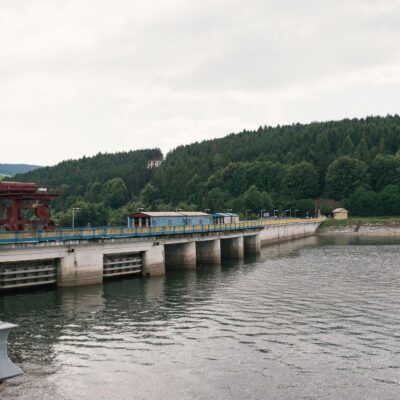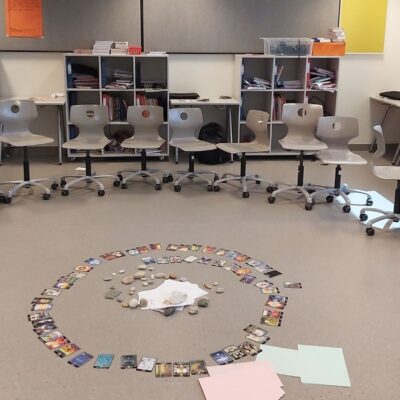
“Never discuss politics or religion in polite company” is an old adage with good intention. By avoiding potential hot topics, conversation stays peaceful and pleasant. But along the way, we seem to have added quite a long list of other hot topics to the ones to avoid. I don’t even need to tell you what they are – I bet by now you’re already thinking about the long list of hot topics in your own social circles.
There’s a big challenge in avoiding these “hot topic” conversations. They are also important conversations that are being missed out on in an effort to be “polite company.”
We miss out on important learning when we avoid topics entirely or discuss only the aspects we’re fairly certain are in the safe-zone. We talk about what we know and miss out on exploring curiosity, wonder, and exploration. The other thing that happens is fear. Fear of saying the wrong thing, repercussions, disappointment, and fracturing relationships. Fear that holds us back from being in genuine contact with one another.
The same thing happens in organizations
Are there hot topics in your organization? Odds are, the answer is yes.
They might be obvious areas of conversation that have the potential for conflict – much like politics and religion in polite company. They might be less obvious hot topics. Conversations that people have learned over time not to have. Conversations that went badly before, were left without closure, and now there is an assumption that it is something to avoid in the future. Perhaps it is conversations that feel like “we’ve already talked about this” or even more to be avoided “we’ve already talked about this before you got here and determined your perspective isn’t helpful.”
There is great value, as leaders of our lives and as leaders in organizations we belong to, to strengthen our ability to see the whole picture. To be willing to explore the whole picture. Even the parts we are unfamiliar with or what is hidden in the shadows. And that happens by being willing and able to look at and embrace the whole picture.
And the whole picture might be bigger than what you’re used to looking at.
Cultivating panoramic vision
There is a difference in photography between using a regular lens, a wide-angle lens, or a panoramic picture.
When using a regular lens, you take a picture that is similar to what the naked eye can see. It captures part of the picture, but not a full view. It’s useful for taking pictures at a fairly close distance. Capturing what’s right in front of you at this moment. This is a helpful view when you want to stay focused on one area of focus – like accomplishing a specific business goal. But not when you are trying to see the whole picture.
A wide-angle lens is attached to the front of a camera to take a single image that is wider than what is possible with the regular lens. The trouble with a wide-angle lens is that it distorts the view. Things that are close appear much larger than things that are further away. It’s common for leaders to have a wide-angle view of their organizations. Because they feel they can see the whole picture, they feel sure they have a handle on everything. But much like a wide-angle photograph, the things that are close up take up much of the focus while things that are further away get lost in the background.
A panoramic view, on the other hand, gives a more whole picture. It’s made by taking a series of pictures and then stitching them together into a whole. The picture displays everything equally. It gives you the sense of being immersed in the whole thing rather than having 1 focal point. It’s possible to see a 360-degree view. All of the parts of the image are equally represented rather than drawing your focus to one part or another.
Choosing the right lens is a leadership capacity
Successful leadership isn’t about having 1 kind of vision or another. It’s about knowing when it’s time to use the different lenses so that you are capturing just the right view for what you are working on. When exploring challenges, starting something new, and even as a regular check-in while working through an operational plan, it’s critical to use your panoramic vision.
Panoramic vision takes courage
There was an advertising campaign in my part of the world recently that poked a little fun at the “perfect” social media pictures we see on Facebook and Instagram. It showed the “perfect” picture and then zoomed out and showed what was around it. A perfectly plated dish of food on a white table zoomed out to reveal the pile of dirty dishes to the side. Smiling child staring straight at the camera zoomed out to reveal the picture they’d just scribbled on the wall. It showed the real-life behind the perfect pictures. The life we all know is there but don’t always acknowledge for the purposes of looking picture perfect. In some ways, the life we really live but don’t have the courage to share publicly.
Seeing the whole picture and letting others see it too takes courage.
Ready to see the whole picture?
Cultivating panoramic vision is a lot like that advertising campaign. You need to be willing to look at the whole picture, not just the perfect part. To have the courage to see and work with the whole picture.
In organizations, that perfect part is the parts of our work that we are happy with. A panoramic vision invites us to look more broadly. Creating space for conversation around what’s not working and what to do about it alongside the conversations about what is working. Making the space for the conversation about what’s not working as life-nurturing as the others too.
Strengthening capacity for using panoramic vision means paying attention to what’s in the shadows as much as what’s in the bright light. Bringing those “hot topic” issues into conversation so regularly that they cease being hot topics.
There is great courage in noticing and planning for overcoming barriers. Every project an organization undertakes will have barriers to its successful fulfillment. Noticing what these barriers might be, discussing them openly, and taking proactive steps as part of project planning to ensure the skills, capacities, and resources necessary for overcoming them is a way of working with panoramic vision.
Celebrating everything takes courage. Looking at the whole picture. Noticing the shadows. Welcoming the hot topics. Embracing barriers. Exploring all of these aspects of the panoramic picture can be done in a judgemental, punishing, life-depleting way. Or, it can be done in an encouraging, discerning, welcoming, life-nurturing way. This is the key to developing mastery with panoramic vision. Being able to see the whole picture and appreciate the beauty of it all.
Not only does willingness to embrace the whole picture create better solutions in organizations, it also brings people closer together. When we learn that it is safe to look at the whole picture, to explore all the topics – both what we feel are good and bad, and conversations happen in the most life-nurturing way possible, it creates more space to step closer together. Space that feels comfortable. Space that invites us into deeper genuine contact with ourselves, our colleagues, and the organization as a whole.
Photo by Johannes Plenio on Unsplash









Leave a Reply